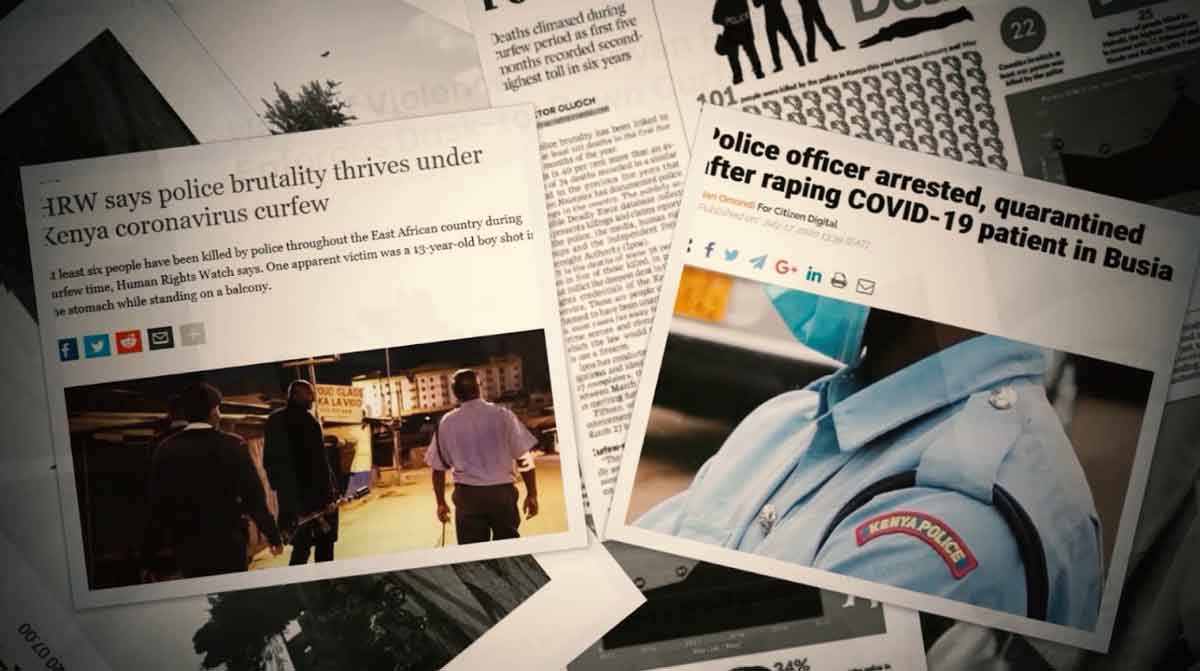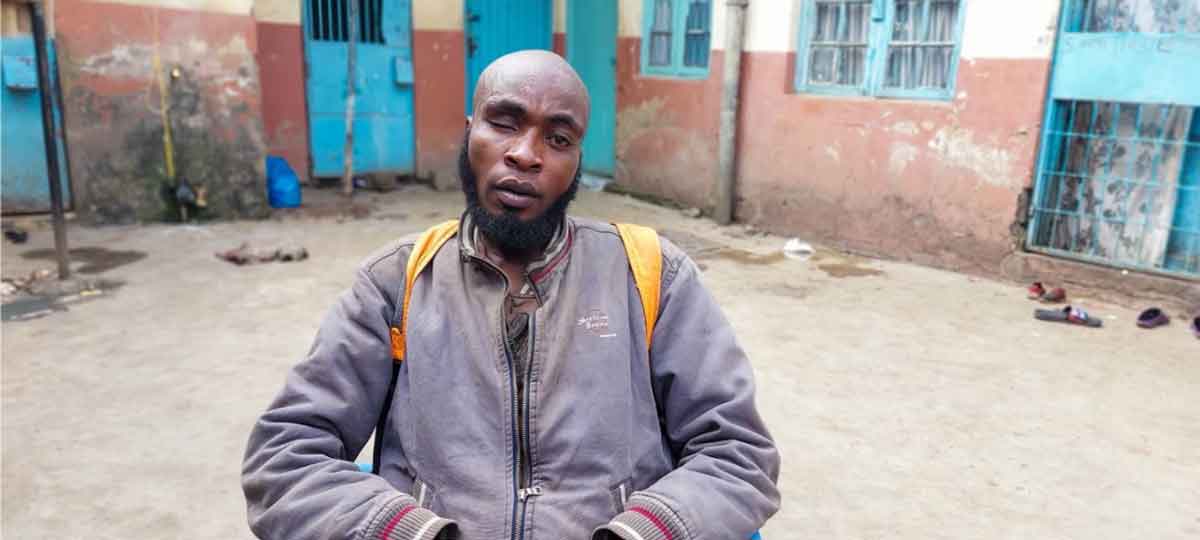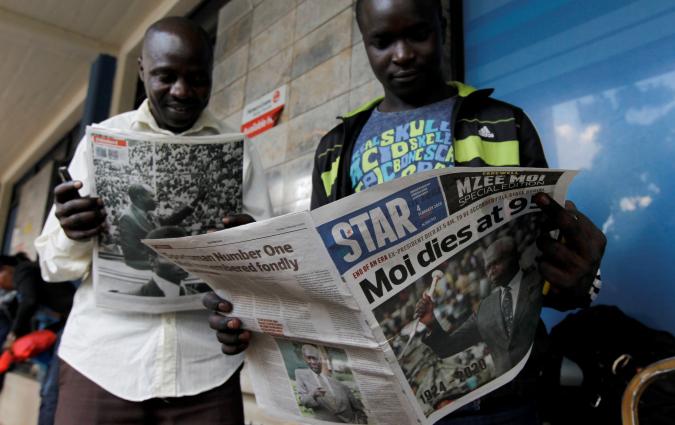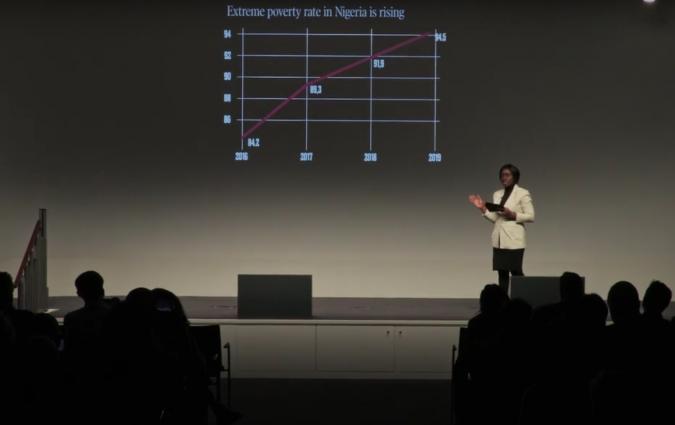In this piece
Nine steps to better coverage of police brutality in Nairobi – and beyond

A collage of Kenyan newspaper headlines created by the author.
In this piece
Does the media have a role to play in accessing justice for victims? | How do we improve coverage?When Kenya announced its first COVID-19 case, the government announced various measures – such as a night curfew, cessation of movement in three counties and mandatory wearing of masks to contain the spread of the virus. The enforcement of these containment measures proved deadlier than the virus itself, and precipitated another chapter in a history of Kenyan police brutality as old as the country itself.
Three years ago, a group of human rights organisations, Missing Voices, began collecting and tracking cases of police violence in Kenya. They have recorded 500 deaths since they began. In 2019, they documented 145 cases of police killings. In 2020, 158 people were killed by police, and 10 disappeared in police custody. In 2021, the number of victims shot up to 219 cases of police killings and enforced disappearances. The most vulnerable people to police brutality are men, aged 18-35, living in informal settlements.
With rates this high, you might expect to find a story about police violence in the media every two to three days. This is not the case. Instead, media coverage I studied across 10 outlets was limited to a handful of extreme cases. It is true that coverage increased during the pandemic to highlight the heavy-handed enforcement of restrictions. But, even then, it was often the same extreme stories involving a murder that were chosen for repetition by multiple outlets.

Michael Maina is a victim of police brutality who lost his eye. Does he hope to get justice? “Where is that justice being served? It should have started by now because everything is there, all the evidence. What is not there? The officer knows what he did to me. I don’t have anything to say to him, but I just want him to put himself in my shoes: suppose I was the one who hit him or did what he did to me? What would he want from me? What kind of justice would he want?” Maina told me.
Does the media have a role to play in accessing justice for victims?
To answer that question, I considered the histories of both informal settlements and policing in Kenya before analysing coverage from 10 major outlets and, wherever possible, interviewing the journalists who cover these areas.
The journalists I spoke to had divergent views on whether media coverage has any impact on access to justice for the victims of police brutality in informal settlements. As some rightly pointed out: the judicial system is an entirely different and autonomous body, with its own methods of operation.
However, I do believe journalism has a role to play in rule of law, and helping people access justice. Reporting is not (and should not be) prosecution, but through its role in informing the public, bearing witness to injustice, and acting as a public watchdog, reporting on police brutality has the power to:
- Make victims visible. Reporting on police brutality puts a face to the victim statistics, and can make individual cases visible and memorable.
- Put pressure on authorities to investigate. Journalists have the ability to directly question authorities about the investigation of police brutality accusations. When reporters constantly ask for answers, authorities may be compelled to investigate.
- Put pressure on the judiciary to prosecute. Legal proceedings take time in Kenya – some cases can drag on for years. The impact of a slow pace on some cases can be the loss of key evidence or witnesses. Everyone, including the prosecution team, slowly moves on to other “more urgent” matters. Only the victim or their family are left to pursue justice. When journalists follow up on cases consistently, it can compel the judiciary to ensure cases are not buried and victims have their day in court.
How do we improve coverage?
How can journalists in Kenya do a better job covering policy brutality in informal settlements?
1. Understand the context
Get to grips with the history of the informal settlements, and with the history of the police force. Understanding the context of this continued violence is crucial to better reporting. Download my full paper for an overview of both.
2. Engage with residents of informal settlements
When reporters engage with residents, they will understand the communities better, which will help in creating fair coverage of the informal settlements. It will also help them overcome the prejudices and stereotypes that may have unconsciously informed their stories about issues affecting informal settlements.
3. Employ reporters from informal settlements
Individuals living in (or who have lived in) informal settlements have a better understanding of the areas and are in a better position to report on issues residents face. Employing reporters from informal settlements will not only enhance the standard of reporting but also the diversity of the newsroom.
4. Always consult more than one source
When reporting on police violence, journalists should not just quote the official police statement. Finding witnesses from the scene where the violence happened will help the journalists tell a more balanced story. For instance, when reporting about a protest, find protestors and have their accounts included in the story.
5. Crowdsource evidence
Most police brutality in informal settlements happens in front of witnesses who used their mobile devices to film. Journalists can gather eyewitness reports and videos for evidence-based stories. Videos can also be used to corroborate witness statements, and can help journalists when questioning the police about particular cases. Setting up a SecureDrop of Signal account may make it safer for witnesses to share video evidence anonymously without becoming targets of retaliation. See this paper by Paul Farrell.
6. Avoid audience fatigue
The issue of police brutality warrants more coverage, but with more coverage comes audience fatigue – especially when incidents of violence share the same basic details. The human cost of violence, however, is almost always unique. Be dogged in asking about the personal consequences of each case. Cases of police violence should also not be treated as stand-alone cases: when reporting a new case, give a background on previous cases your outlet has covered in the same area or circumstance. Establishing a searchable database or archive of cases that your reporters and readers can consult may be helpful to this end.
7. Keep following up
Follow up with the relevant authorities and with the victims and their families. Highlight the progress of investigations or prosecution.
8. Undertake in-depth investigations
Set aside resources for in-depth reporting of police brutality in informal settlements: stories that give the public more context and a better understanding of the gravity of the issue. Look for repeat offenders: rather than investigating the criminal history of the victim, what does the service record of the officer look like?
9. Sensitivity training
My recommendations for better reporting of police brutality in informal settlements would not be complete without calling for sensitivity on the part of journalists. Just like any other form of violence, police violence is traumatic for the victims and their families. It pains me to have to remind journalists: the poor are not more resilient to trauma, and deserve to be handled with care as you would someone in the suburbs.
Do not push or insist on responses – especially when the victim is not comfortable, or safe to speak. Think about how your interviews impact the victims. For instance, you might ask: what state will this person I am interviewing be in after I finish the interview and leave? Should a family member be there to offer support?
With better and continued reporting, our stories might lead to safer living spaces for the young people who are always at risk of becoming victims. Whether it does or does not: it is still our mandate as journalists to report this information accurately.
This project and fellowship have been made possible by the support of the Thomson Reuters Foundation.




